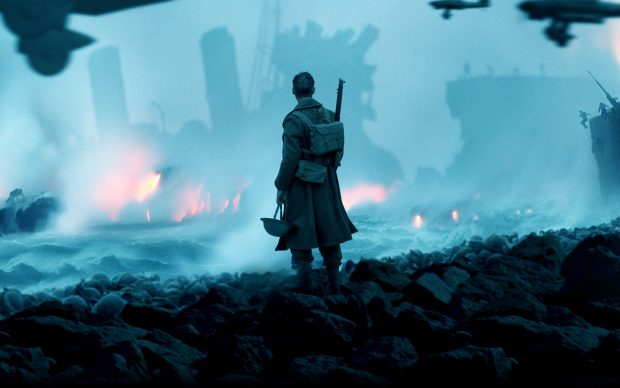The Gist:
After a defeat, the allied forces await evacuation as the German troops close in while civilian boats make the dangerous trip across the channel to rescue them.
The Review:
If there’s one thing Christopher Nolan has shown us is it’s that like it or not, he goes against the norm and usually comes out on top. From The Dark Knight Trilogy all the way to Interstellar, his films have stood out for many reasons. Mainly ambition and I’m alright with that, truly.
Now there’s Dunkirk, shot on 70mm, practical effects, real extras and no 3D conversions, keeping it real. While granted he could have achieved the same effect going digital, there is something rather fascinating knowing that what you’re watching was actually done for real, adding to the realism of the horror those thousands of young men went through on that eventful day.
Contrary to what Nolan is known for that be heavy exposition, Dunkirk is quite light on dialogue and speeches. Hell, it takes a good twenty minutes of ambushes, Tommy (Fionn Whitehead) desperately attempting to board a ship and air raids for a word to be said. And it works, no one needs to know what these guys are going through, we can see it. Once again shot by Hoyte van Hoytema the images are crisp, the camera is static, scenes are drawn out with nothing much but body language and facial ticks. Personally, this was one of the film’s strongest points, showing not telling can be much more effective.
While most movies will have a three act structure, beginning middle and bombastic finale this film feels like it’s an ongoing third act, long bouts of tension then eardrum busting battle scenes along with so many other things happening, if this film was any more than two hours it would just be unbearable to finish.
Tension wise, hardly any Germans appear onscreen, always somewhere just out of frame their bullets and bombs coming out of nowhere. Special mentions must go to the sound department if they’re not up for next years Oscars I don’t know what will and of course Hans Zimmer’s score doesn’t disappoint.
As traditions go, the film is split into three separate but overlapping timelines. One is on the ground following Tommy and Harry Styles who makes a good impression acting wise.
The sea following Mark Rylance’s Mr Dawson who takes his small fishing boat out to sea. He picks up Cillian Murphy’s shell shocked soldier along the way. What their names are aren’t important since the movie itself never felt the urge to introduce anyone. Rylance gets the bulk of the dialogue.
The third story is in the air with Tom Hardy’s Farrier and his squad taking on ze German planes. As mentioned all three stories will intertwine and overlap sometimes throwing you into past events without realising, however, confusing it is not.
The film as a whole takes full advantage of the 70mm frame, there will be points you’ll be forced to focus on different parts of the screen there’s so much going on. Aerial footage will give those with vertigo a slight increase in heart race and anyone sensitive to loud gunfire should take note. The sound design itself is there to make you feel you are there and by god it does. So is this Christopher Nolan’s best movie? Debatable but on a technical level yes absolutely.
The Verdict:
This film was made for the cinema plain and simple. The bigger the screen the better, watch it big, watch it loud.


















No Comments